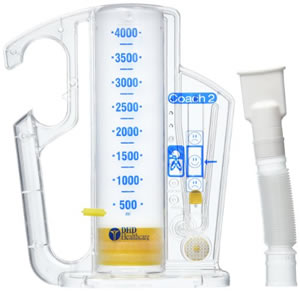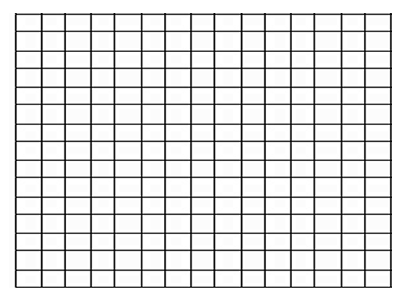Investigation: Scientific Process and Lung Capacity
Part 1: Background Information
Often, we think of science as something that only happens in laboratories where people where white lab coats and safety glasses. In reality, scientific processes are performed every day, by everyone. It's the process you go through when you try to solve a problem, like "Why isn't my car starting?" The steps you might take to answer this question are similar to the steps scientists might take to answer their questions. Most scientists agree to a common language of problem solving called "The Scientific Method," which is often described as a step-by-step methodology for solving problems. To be fair, there are many different ways to practice science, and not all of them use this procedure.
Part 2: The Task

You will use the scientific method to answer a question about human lung capacity. The volume of air in your lungs can be measured with a spirometer, which measures the air inhaled in mL (milliliters). Lung volume for an adult human is about 6000 mL, though not all the space is used for gas exchange. The maximum usable capacity of the lungs is called the vital capacity. There are many factors that could explain variations in the vital capacity of any two individuals.
Objectives:
- To develop scientific reasoning skills
- To formulate hypotheses and arrive at conclusions
- To establish that the most reasonable explanations for natural phenomena are those that are supported by evidence
Materials: Spirometer and mouthpieces, calculators, meter sticks or tape measures
Safety considerations: Students who have respiratory issues should not participate. If you at any time feel lightheaded, discontinue tests.
Part 3: The Experiment
1. Make observations. Have several members use the spirometer. Was everyone's vital capacity the same or were there variations?
2. Ask a question. Discuss wording for a causal question about your observations. State a question related to lung volume and observations.
3. Form a hypothesis: What factors do you think have a causal relationship with lung capacity. Factors could include variables like size of the person or overall fitness of the person.
4. Class Prediction: Half of the class will be testing size as a causal factor, and the other half will be testing overall fitness. Check your assigned prediction:
 If size is related to lung capacity, then larger individuals will have a greater lung capacity.
If size is related to lung capacity, then larger individuals will have a greater lung capacity.
Size will be measured as height in centimeters.
 If fitness level is related to lung capacity, then those with a higher level of fitness will have a greater lung capacity.
If fitness level is related to lung capacity, then those with a higher level of fitness will have a greater lung capacity.
Fitness will be measured by individual report on the level of activity, using a scale.
1= not very active | 2 = somewhat active | 3 = moderate activity | 4 = extremely active
5. Experimental Variables. Considering your hypothesis:
a) State the independent (manipulated) variable:
b) State the dependent (responding) variable:
6. Collect data. Construct a data table with appropriate labels and show the data you gathered. Be sure to include labels and organize the data in a way that other viewers can easily see trends.
Graph the data. Graph the data using a bar graph that compares the three groups, using an average lung volume for each. The X axis is always the independent variable and the Y axis is the dependent variable. Be sure to label the graph and include units!
7. Draw Conclusions - To make a conclusion, you must look at the results of the test and decide whether your hypothesis was supported or rejected. Avoid using the word "prove" in your conclusions. All scientific knowledge is based on tentative or provisional knowledge, nothing is final. State your conclusion in a full sentence using the proper format and include a summary of the data. "The hypothesis that (repeat hypothesis) was (supported or not supported) because the data showed that… “
Reflection
8. The experiment you did today has some flaws in its design. List other factors that may have influenced your results. Discuss how these uncontrolled variables may have affected your results.
9. What if both fitness level and size had an effect on lung capacity. Describe a way that you could determine which had the GREATER effect?
10. Many experiments suggest extensions or things that should be researched further. Describe another experiment related to lung capacity that you could perform.
Related Resources
Equipment Station Lab – a station lab activity where students move through stations and perform tasks with scientific equipment
Measure a Bean – basic lab on measurements and collecting data
Investigation – Heat Storage and Loss – Use a jar and different types of insulation to explore how heat is lost and which materials are better insulators (Key, TpT)
Plop Plop Fiz Fiz – measure the rate of dissolving in alka-seltzer tablets in both hot and cold water (a basic experiment for introducing the scientific method)


